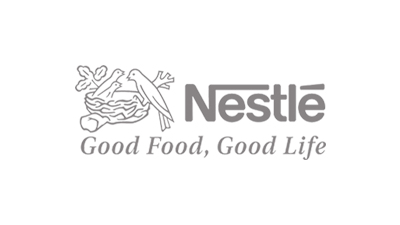The peony is a flowering plant in the genus paeonia. The country-of-origin of peony is from China. Now, peony is transplanted into many countries, such as Japan, Korea, USA, Europe and other countries, especially ornamental peony. Ornamental peony is generally not considered to not have food and pharmaceutical value. Peony comes in many varieties: paeonia decomposita, paeonia abchasica, paeonia anomala, paeonia ostii, paeonia rockii, etc. Many of them are ornamental peony not paeonia ostii, paeonia rockii. Paeonia ostii and paeonia rockii have a lot of food and pharmaceutical value. Their seeds and flower can be used to extract the oil and their roots can be used to extract paeonol. Besides that, the extract of leaf and stem also has food and pharmaceutical value. In a word, the extract of paeonia ostia and paeonia rockii has food and pharmaceutical value. Scope of the Report: Food/pharmaceutical peony mainly refers to paeonia ostia and paeonia rockii. The seed of paeonia ostia and paeonia rockii can be produce peony seed oil, which is a new resources food in China. The root of paeonia ostia can be extracted paeonol, which is an herbal remedy in traditional Chinese medicine and has anti-inflammatory and analgesic function. Since 2011, NHFPC approved peony seed oil as new resources food, so peony seed oil industry develop rapidly and many flower growers in Anhui, Shandong, Shaanxi province enlarge the culture area of paeonia ostia. Owning to as national flower, paeonia ostia and paeonia rockii is only planted in China, such as Shandong, Anhui, Shaanxi province, and this peony hardly export to other country. So the raw material- paeonia ostia and paeonia rockii of extractive of food and pharmaceutical peony mainly come from China. The production of food and pharmaceutical peony?s extractive is mainly in China, at the same time, other countries also extract paeonol from paeonia ostia?s root. It is estimated that supported by downstream industries, global demand of food and pharmaceutical peony demand will keep increasing with an average growth rate of 37.67% in the coming five years. In addition, similar with that of globe, the production of food and pharmaceutical peony in China will increase from 54.2 MT in 2010 to 243 MT in 2015, accompanied with an average production growth of 52.36% in the coming five years. We tend to believe that this industry still has a bright future, considering the current demand of food and pharmaceutical peony. As for product prices, the slow downward trend in recent years will continue in the next few years, as competition intensifies. Similarly, there will be fluctuations in gross margin. The worldwide market for FoodPharmaceutical Peony is expected to grow at a CAGR of roughly xx% over the next five years, will reach xx million US$ in 2024, from xx million US$ in 2019, according to a new GIR (Global Info Research) study. This report focuses on the FoodPharmaceutical Peony in global market, especially in North America, Europe and Asia-Pacific, South America, Middle East and Africa. This report categorizes the market based on manufacturers, regions, type and application. Market Segment by Manufacturers, this report covers Peony Love Ruipu mudan Henan Xiangyue Weizhen Guose Agriculture Gansu Wanlinxiqi Anhui Chinature Klorane Martin Bauer Group Naolys Active Organics Naturex Aunutra Nelsons Natural World Anhui Fengyang Phytochemistry Xi'an Changyue Phytochemistry Pioneer Herb Xi'an Shenyuan Novoherb King-Stone Nutra Green Market Segment by Regions, regional analysis covers North America (United States, Canada and Mexico) Europe (Germany, France, UK, Russia and Italy) Asia-Pacific (China, Japan, Korea, India and Southeast Asia) South America (Brazil, Argentina, Colombia etc.) Middle East and Africa (Saudi Arabia, UAE, Egypt, Nigeria and South Africa) Market Segment by Type, covers Paeonia Ostii Paeonia Rockii Market Segment by Applications, can be divided into Food industry Pharmaceutical industry The content of the study subjects, includes a total of 15 chapters: Chapter 1, to describe FoodPharmaceutical Peony product scope, market overview, market opportunities, market driving force and market risks. Chapter 2, to profile the top manufacturers of FoodPharmaceutical Peony, with price, sales, revenue and global market share of FoodPharmaceutical Peony in 2017 and 2018. Chapter 3, the FoodPharmaceutical Peony competitive situation, sales, revenue and global market share of top manufacturers are analyzed emphatically by landscape contrast. Chapter 4, the FoodPharmaceutical Peony breakdown data are shown at the regional level, to show the sales, revenue and growth by regions, from 2014 to 2019. Chapter 5, 6, 7, 8 and 9, to break the sales data at the country level, with sales, revenue and market share for key countries in the world, from 2014 to 2019. Chapter 10 and 11, to segment the sales by type and application, with sales market share and growth rate by type, application, from 2014 to 2019. Chapter 12, FoodPharmaceutical Peony market forecast, by regions, type and application, with sales and revenue, from 2019 to 2024. Chapter 13, 14 and 15, to describe FoodPharmaceutical Peony sales channel, distributors, customers, research findings and conclusion, appendix and data source.
Table of Contents 1 Market Overview 1.1 FoodPharmaceutical Peony Introduction 1.2 Market Analysis by Type 1.2.1 Paeonia Ostii 1.2.2 Paeonia Rockii 1.3 Market Analysis by Applications 1.3.1 Food industry 1.3.2 Pharmaceutical industry 1.4 Market Analysis by Regions 1.4.1 North America (United States, Canada and Mexico)









